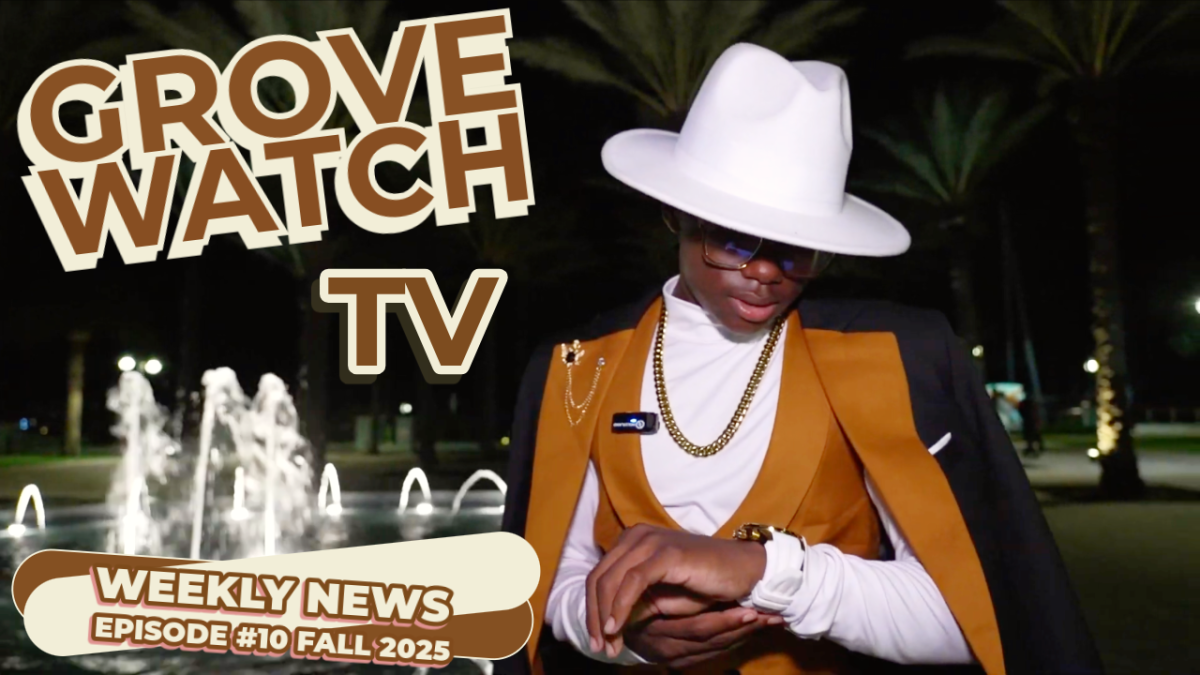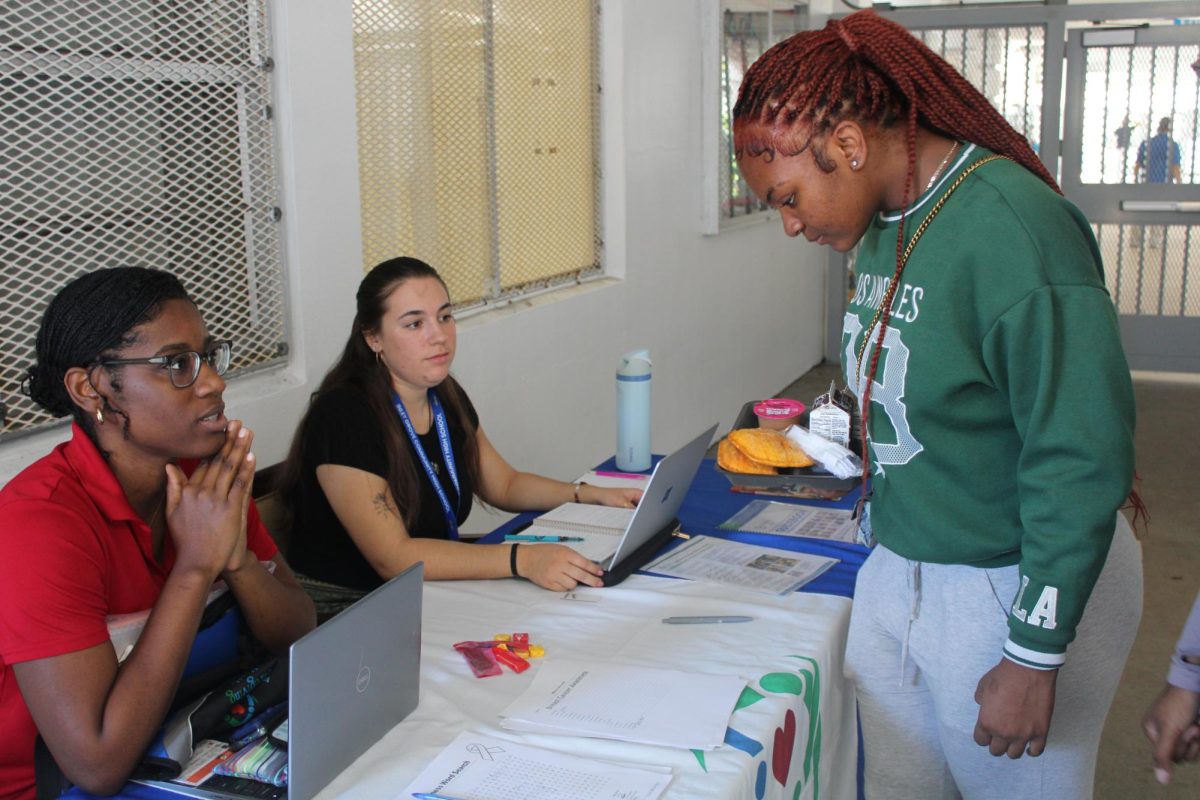SJW: Forgotten history
LIBERATION: “You never completely have your rights, one person, until you all have your rights,” said Marsha P. Johnson.
February 25, 2022
When we talk about Queer History most people think of white gay men or lesbians but we avoid the topic of Black history and how that intersects with Queer history. Black Queer people have always been a pioneer for queer rights such as Marsha P. Johnson and Bayard Rustin, however, we don’t give them the credit that they deserve even forgetting that Queer history was beginning way before the 1960s.
The Queen
According to the National Center for Transgender equality, “Drag is a type of entertainment where people dress up and perform, often in highly stylized ways. Today, many prominent drag artists are still people who identify as men and present themselves in exaggeratedly feminine ways as part of their performance, and are known as drag queens.”
The term “drag queen” is not recent because the world’s first documented drag queen goes as far back as the 19th century. His name was William Dorsey Swann also known as “The Queen.”
Swann held drag balls that were private affairs, however, they were known by the public because of police raids and Glover Cleveland denying Swann’s pardon to get out of jail since he was sentenced to 10 months for “disorderly house.”
Channing Joseph, an LGBTQ+ historian, and journalist said, “During Swann’s lifetime, he was sent to jail numerous times for holding drag balls after police raids. He faced beatings, he faced losing a job, he faced the loss of friends, all because of his effort to really build a community around queerness and drag in the 19th century.”
Mr. Joseph said, “In Swann’s day the term queen signified a leader, somebody who held an honored place within the community.”
I think queen signified Swann perfectly because he was a leader for a queer resistance group. His work will not be forgotten, only if we continue to remember his legacy instead of erasing it.
Breaking boundaries in the 20s
During the Harlem Renaissance, we talk about icons like Langston Hughes or Zora Neale Hurston. While their story is vital and should always be told, we shouldn’t view them as the only people who played a role in the Harlem Renaissance.
Gladys Bentley was a blues singer, pianist, and crossdresser during the Harlem Renaissance.
According to Smithsonian, “As Bentley became more popular, she started performing at Harry Hansberry’s Clam House—one of New York City’s most well-known gay speakeasies—in the 1920s. Openly lesbian, she sang raunchy remakes of popular tunes in a deep voice, dressed in her signature men’s style of tuxedo and top hat.”
She was described by Langston Hughes as, “An amazing exhibition of musical energy.”
In the 50s, she stated that “I am a woman again.” In Gladys Bentley: Gender-Bending Performer and Musician PBS, they state that she possibly had to conform to the pressures of the McCarthy era and the lavender scare.
We may not know what exactly made her say that, nevertheless, we do know the impact she had on our history and how she deserves to be remembered.
Dwandalyn Reece, a curator of Music and Performing arts said, “I see her as a pioneer. She’s somebody we could all look up to – whether we’re gay, lesbian, bi, heterosexual. She invited us to be our whole selves and that’s what we all want to be.”
Mabel Hampton was a dancer, activist, and philanthropist. She was known as “Big Bear” to close friends and her longtime girlfriend, Lillian Foster.
According to the Mabel Hampton Oral History Collection, “she danced at clubs like “The Garden of Joy”, sang as a member of the Lafayette Theater Chorus, and performed with Harlem Renaissance stars such as Gladys Bentley.”
LGBTQ Nation states that “Her recollections of New York’s lesbian parties in the late 1910s and 1920s would provide a window into gay life in New York City, and recount the terms lesbians and queer women used to refer to themselves. In her recorded oral history, Hampton said the women of her time used to identify themselves as “bulldykers and lady lovers, studs and butch.”
Mabel Hampton said, “I have been a lesbian all my life, for eighty-two years, and I am proud of myself and my people. I would like all my people to be free in this world, my gay people and my black people.”
The erasure of MLK’s Adviser
Bayard Rustin was a leader in social movements for civil rights and nonviolence. He was the lead adviser for Martin Luther King Jr.
Rustin also organized the March in Washington which shed light upon him and more people had to hear what he said. Until the movement started progressing even more which caused him to have to step back because then “people wouldn’t be distracted with the fact that he was gay,” said Walter Naegle, Bayard’s partner.
Fight for Black Trans women
Recently Marsha P. Johnson has gained more attention, however, with the attention comes ignorance.
Knowing Marsha P. Johnson is not enough because we must understand Marsha P. Johnson to know how her story affects us even in the present.
She was a black transgender activist and one of the founders, alongside her friend Slyvia Rivera, for S.T.A.R (Street Transvestitive Action Revolutionaries).
She played a vital role in the Stonewall riots and queer riots.
Ariel Mary Ann, an artist and activist said, “I remember reading about her death, it didn’t feel right that she would commit suicide. I believe she was murdered cause she was Black and trans, the police didn’t care. I know for a fact if this were a white cisgender woman, they would be searching far and wide to find out what happened.”
This sentiment is not alone because MedPage Today stated “transgender people faced a much higher mortality rate than cisgender peers, according to a new Dutch study.”
In addition, Unerased: Counting Transgender lives found that the murder rate for Black trans women was 1 in 2,600 which means “if in 2015 all Americans had the same risk of murder as young black trans women there would have been 120,087 murder instead of 15,696 murders.”
Some people think the fight for justice is possibly over, however, we must be reminded of what we are fighting for just like how Marsha P. Johnson fought for queer rights even with a community that was not accepting of her. For progress to truly happen we must be aware of the systemic problem that affects Black trans lives.
Marsha P. Johnson must be remembered.
Black Queer history continues
Ritchie Torres serves as a U.S. Representative for New York 15th district and was the first openly gay Afro-Latino elected in Congress.
“No one should have to fear losing their job, home, or education because of who they are or who they love,” said Ritchie Torres.
Mondarie Jones represents the New York 17th district and is one of the first openly gay black congress members.
“Indeed, in the 244-year history of the United States, there has never been an openly gay, black member of Congress. That changes this year, thanks to the great people of New York’s 17th Congressional District,” said Rep. Jones.
Mauree Turner is the first non-binary and Muslim U.S. Representative in Oklahoma Legislator.
Representative Turner said, “People have asked me to justify what it means to be Muslim and queer. I shouldn’t have to justify how I exist. That was really jarring for me – having to sit through a series of interviews where people ask you those probing and prodding questions continuously.”
Kim Jackson serves as the first LGBTQ+ state senator in Georgia.
“I am committed to creating a world where you do have to go through what I went through. I am committed to creating a world where girls – all girls – get to feel safe and free to be exactly who they are. Friends you are loved,” said Senator Kim Jackson
It is important for us to memorialize the history of our past but also the present history that continues to happen.
These are not the only Black queer people who have influenced American history, there are hundreds of icons who have left an impact but are not talked about because of racism, homophobia, and transphobia.
For us to do better as individuals, we must be better allies instead of being performative activists and making everything about ourselves. Take the moment to uplift voices instead of erasing them.





